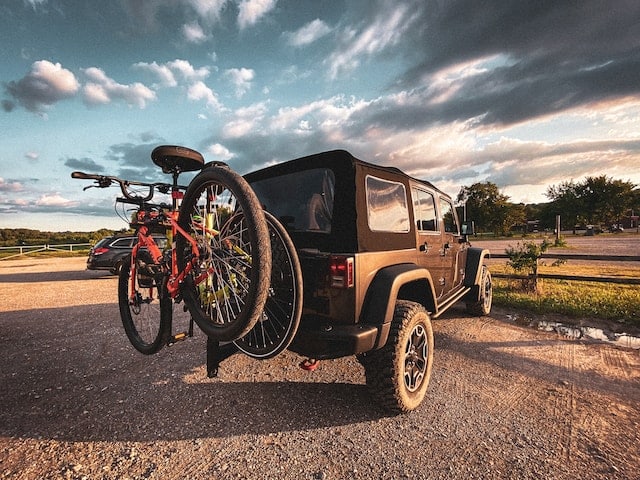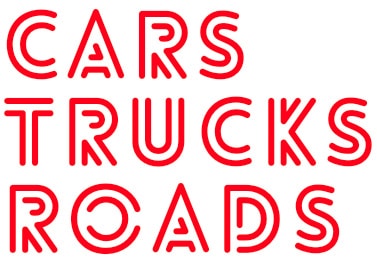
Do bike racks damage your car? It’s a common concern among vehicle owners who are also cycling enthusiasts. The short answer is, they can, but it largely depends on the type, quality, and installation of the bike rack. Properly installed, high-quality racks are generally safe and won’t harm your car.
Types of Bike Racks
There are three main types of bike racks: trunk-mounted, roof-mounted, and hitch-mounted. Each has its pros and cons. Trunk-mounted racks are the most likely to cause damage if not installed correctly.
Trunk-Mounted Racks
These racks rest against the trunk. They are secured with straps. If the straps are too tight, they can damage the paint or even dent the trunk.
Roof-Mounted Racks
These are attached to the car’s roof. They are less likely to damage the paint but can affect the car’s aerodynamics. This can lead to increased fuel consumption.
Hitch-Mounted Racks
These racks attach to a hitch at the rear. They are the least likely to cause damage. They are also generally the most stable.
Preventing Damage
Preventing damage is key. Always follow the installation instructions. Make sure all straps and attachments are secure but not overly tight. Check your setup frequently, especially during long trips. Here are more tips for how to do it right.
Pick the Right Rack
Your choice of bike rack matters. It depends on your car type, usage, and driving habits. If you park in a garage, consider a hitch-mounted rack. A roof rack is better if you need space for more gear.
Proper Installation
Install the rack correctly. This is the most important step. Follow the manual or get professional help. Calgary Hitch Shop can assist with this.
Double-Check Your Setup
After securing the bikes, check the setup. Tighten loose straps. Make sure everything is attached well. Double-checking prevents many issues.
Mind Your Driving
Your driving style matters. Carrying bikes changes your vehicle’s dimensions. Be careful when reversing. Know your vehicle’s clearance with a roof rack.
Padded Racks
Some racks come with padding. This can help protect the car’s paint. It’s a good option for those extra concerned about damage.
Key Takeaways
To sum up, bike racks can damage your car if not chosen or installed carefully. Opt for high-quality racks and install them correctly to minimize risks. Take the time to check your setup regularly, especially if you’re going on a long trip. With a little care, you can keep both your car and your bike safe.
The Impact of Roof Racks on Vehicle Performance

Roof racks offer a convenient solution for transporting gear, luggage, and oversized items. However, while they add to a vehicle’s versatility, they also influence its performance in various ways. Here’s how a roof rack can affect your car’s performance:
Fuel Efficiency
The most noticeable effect is on fuel economy. A roof rack, especially when loaded, increases the aerodynamic drag on a car. This means the engine has to work harder to maintain the same speed, consuming more fuel in the process.
- Unloaded Roof Rack: Even when empty, a roof rack can decrease fuel efficiency by around 2% to 8%, depending on the vehicle and rack design due to the added aerodynamic drag.
- Loaded Roof Rack: When loaded, especially with bulky items, the impact is more pronounced. Fuel efficiency can decrease by 10% to 25% based on the weight and size of the load and how it’s positioned.
Aerodynamics
Even without a load, the mere presence of a roof rack disrupts the streamlined flow of air over the car, which can also contribute to increased fuel consumption.
Handling
A loaded roof rack can raise the car’s center of gravity, making it less stable in turns and more susceptible to side winds. This can affect the car’s handling, especially at higher speeds.
Acceleration and Braking
The added weight on the roof, especially if the roof rack is heavily loaded, can slightly reduce acceleration and increase braking distances.
Noise
Roof racks can increase wind noise at higher speeds. This can be especially noticeable in roof-mounted cargo boxes or with irregularly shaped items that aren’t aerodynamically designed.
Suspension Wear
Continuously driving with a heavy load on the roof can put additional strain on the car’s suspension system, potentially leading to faster wear.
Increased Height
With items on the roof rack, the vehicle’s overall height increases, which can be problematic for low-clearance areas like parking garages or drive-thru windows.
If you plan to use a roof rack, it’s essential to:
- Limit Usage: Remove the roof rack when it’s not in use to maintain optimal fuel efficiency and performance.
- Check Weight Limits: Always adhere to the manufacturer’s weight limits for both the roof rack and the car’s roof.
- Secure Loads Properly: Ensure that items are securely fastened to prevent them from becoming airborne or causing uneven weight distribution.
- Drive Carefully: Be aware of the changed dynamics, especially when cornering or in windy conditions.
In conclusion, while roof racks are incredibly useful for transporting large or bulky items, they can impact your car’s performance. Being aware of these effects and taking appropriate precautions can help you use a roof rack safely and efficiently.
Why Even Properly Installed Bike Racks Can Cause Wear and Tear on Your Car

Even with proper installation, a bike rack can eventually contribute to wear and tear on your car for several reasons:
Friction
No matter how well-padded or well-designed a bike rack is, the constant contact and friction between the rack and the car’s surface can lead to paint scratches over time.
Vibration
As you drive, vibrations travel through the vehicle and the attached bike rack. These vibrations can loosen fittings or create friction points that may cause minor damage to the car or its finish.
Weight Load
Over time, the weight of the bikes can strain the points where the rack attaches to the vehicle, leading to potential deformation or weakening of the car’s structure.
Environmental Factors
Weather conditions can exacerbate wear and tear. Moisture trapped between the rack and the car can lead to rust, while sun exposure can fade paint where the rack is attached.
Driving Conditions
Driving at high speeds, making sharp turns, or traversing rough terrains can place extra stress on the rack’s attachment points, which could result in damage over time.
Material Fatigue
The materials of both the rack and the car can suffer from fatigue due to repeated application and removal of the rack, as well as from bearing weight over long periods.
In summary, while a well-chosen and well-installed bike rack minimizes the risk of immediate damage, long-term use can inevitably contribute to wear and tear on your vehicle.
Do Bike Racks Damage Your Car? FAQs

Q: Will any bike rack work for my car?
A: No, different cars require different types of bike racks. It’s crucial to choose one that is compatible with your vehicle to minimize the risk of damage.
Q: Can bike racks scratch my car’s paint?
A: Yes, incorrect installation or use of low-quality bike racks can scratch your car’s paint. Make sure to install the rack correctly and pad any points of contact.
Q: What can I do to prevent damage from a bike rack?
A: Choose the right type of bike rack for your vehicle, follow installation instructions carefully, and frequently check the rack and straps for security. Proper installation is key to preventing damage.
Q: Do hitch-mounted racks cause less damage?
A: Hitch-mounted racks generally cause less damage to the car’s paint since they don’t touch the body of the car. However, they may obstruct the rear view or license plate if not installed properly.
Q: How often should I check the stability of the bike rack?
A: It’s advisable to double or triple-check the rack’s stability both before and during your journey, especially if you’re traveling long distances or at high speeds.
Q: Is it necessary to remove the bike rack when not in use?
A: While it’s not strictly necessary, removing the bike rack when it’s not in use can reduce the chances of accidental damage and also improve your vehicle’s aerodynamics.
Q: Can roof-mounted bike racks affect my car’s mileage?
A: Yes, roof-mounted racks can create drag and may reduce your car’s fuel efficiency.
Q: What’s the maximum weight my bike rack can carry?
A: The maximum weight varies by product and vehicle. Always check the manufacturer’s guidelines to prevent overloading, which can lead to damage.
Q: Do I need special tools for installation?
A: Most bike racks come with all the hardware needed for installation. However, some may require additional tools or professional installation to ensure they’re secure.
Q: Can bike racks be used on any type of vehicle?
A: Bike racks are versatile but not universal. Always check the compatibility with your specific vehicle model before purchasing.


